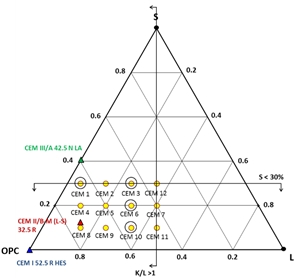The use of ternary cements to reduce the environmental impact of concrete
DOI:
https://doi.org/10.21809/rilemtechlett.2016.19Keywords:
Blended cement, Limestone filler, Blast furnace slag, Fly ash, SustainabilityAbstract
In the current context of climate change, reducing the greenhouse gas emissions is one of the greatest challenges of our society. As concrete is the second most used material in the world after water, its environmental impact is significant, especially because of the production of cement. Clinker substitution is according to the International Energy Agency and the World Business Council for Sustainable Development one of the four main reductions levers for the cement industry. Unlike Carbon Capture and Storage technology, replacing clinker with by-products such as fly ash and blast-furnace slag is technically feasible and applicable today. The use of blended cements is nowadays more and more commonly widespread. Ternary cements is particularly advantageous to benefit the synergetic action of two substitutes such as fly ash and limestone filler. Cement standard EN 197-1 is evolving towards more ternary binders but their impact on concrete properties are not thoroughly investigated yet. This paper presents some effects of newly developed ternary cements on concrete. The use of composite cements is a compelling solution to reduce the environmental impact of concrete but it is necessary to always assess their suitability in concrete.

Downloads
Published
How to Cite
Issue
Section
License
Authors retain copyright of the articles published in RILEM Technical Letters and grant the journal the right of first publication with open access. The work is simultaneously licensed under Creative Commons Attribution 4.0 International License (CC BY 4.0) that allows others to share and adapt the work under the following terms: 1) a proper attribution is given in a form of bibliographic record with the DOI link directing to RILEM Technical Letters; 2) a link to the license is provided; 3) the changes (if any) are indicated.









